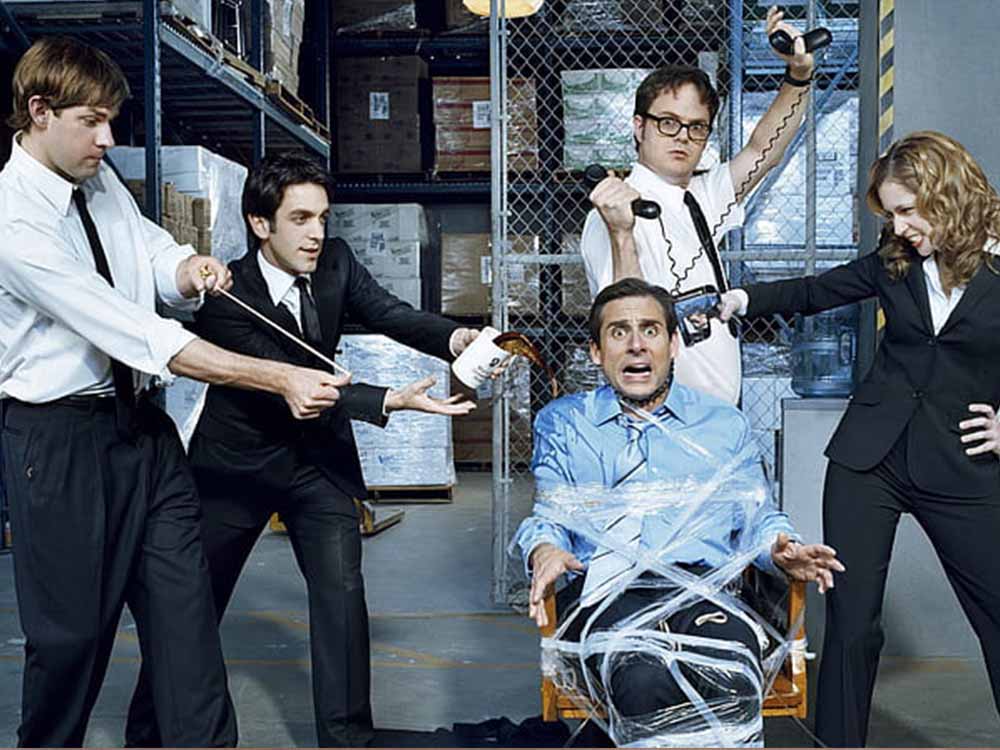The Office in 2008: A Workplace Comedy Phenomenon Continues to Shine
“The Office,” the mockumentary-style workplace sitcom, maintained its comedic brilliance in 2008. This exploration delves into the memorable characters, key plot developments, standout episodes, and the enduring charm of “The Office” during this pivotal year.
Key Plot Developments and Character Dynamics
Michael Scott’s Quirky Leadership:
In 2008, Steve Carell continued to shine as Michael Scott, the bumbling yet endearing regional manager of Dunder Mifflin’s Scranton branch. Michael’s quirky leadership style and well-intentioned, albeit often misguided, attempts to connect with his employees remained a central theme, providing ample comedic moments.
Jim and Pam’s Relationship Journey:
The romantic storyline between Jim Halpert (John Krasinski) and Pam Beesly (Jenna Fischer) reached significant milestones in 2008. From Jim’s heartfelt proposal to their engagement, the evolving dynamics of Jim and Pam’s relationship continued to resonate with fans, adding emotional depth to the series.
Dwight Schrute’s Antics:
Rainn Wilson continued to deliver comedic gold as Dwight Schrute, the eccentric and ambitious salesman. Dwight’s antics, including his rivalry with Jim and his unorthodox methods, contributed to the show’s humor and established him as one of the most iconic characters on “The Office.”
Standout Episodes and Moments
“Dinner Party”:
The episode “Dinner Party” is often cited as one of the standout episodes of 2008. This cringe-inducing yet hilarious episode, set at Michael’s condo, showcased the awkward dynamics of his relationship with Jan Levinson (Melora Hardin) and provided viewers with memorable moments.
“Money” (Part 1 and 2):
The two-part episode “Money” followed Jim and Pam’s journey to Dwight’s beet farm and revealed the significance of Jim’s investment. This storyline not only brought humor but also added layers to the characters, showcasing the series’ ability to balance comedy with genuine emotion.
“Stress Relief” (Part 1 and 2):
“Stress Relief,” a special two-part episode that aired after Super Bowl XLIII, became a fan favorite. The episode featured a hilarious fire drill and an over-the-top safety demonstration by Dwight, providing viewers with laughter while highlighting the absurdities of office life.
Evolving Dynamics and Supporting Characters
Ryan Howard’s Corporate Ascension:
B.J. Novak’s character, Ryan Howard, continued his corporate ascent and descent, showcasing the satire of corporate culture. The evolution of Ryan’s character added layers to the show’s exploration of ambition, ego, and the consequences of climbing the corporate ladder.
Stanley Hudson’s Deadpan Humor:
Leslie David Baker’s portrayal of Stanley Hudson and his deadpan humor remained a consistent source of comedic relief. Stanley’s monotone reactions and his love for crossword puzzles became integral to the ensemble cast’s chemistry.
Creed Bratton’s Quirkiness:
Creed Bratton, played by the eccentric Creed Bratton, brought his unique brand of quirkiness to the show. Creed’s mysterious past, bizarre anecdotes, and offbeat behavior made him a fan-favorite character.
Cultural Impact and Legacy
Embrace of Mockumentary Style:
“The Office” in 2008 continued to be celebrated for its innovative use of the mockumentary style, with characters frequently breaking the fourth wall. This stylistic choice added authenticity to the show’s portrayal of everyday office life and influenced subsequent television comedies.
Legacy of Memorable Catchphrases:
The year 2008 contributed to “The Office’s” legacy of memorable catchphrases and cultural references. Phrases like “That’s what she said” and “Bears, beets, Battlestar Galactica” became ingrained in popular culture, demonstrating the show’s impact on contemporary humor.
Longevity and Streaming Success:
“The Office’s” continued popularity in 2008 set the stage for its enduring success in the streaming era. The series found a new generation of fans on platforms like Netflix, solidifying its status as a timeless workplace comedy.
In conclusion, “The Office” in 2008 maintained its status as a workplace comedy phenomenon. The blend of quirky characters, nuanced storytelling, and a commitment to the mockumentary style contributed to the show’s comedic brilliance and enduring legacy.











